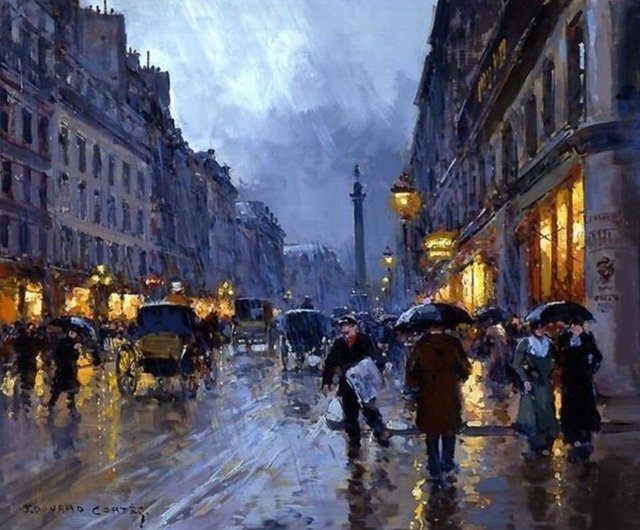
La lluvia cae sobre Rue de la Paix, uno de los barrios comerciales más opulentos de París, en aquél año de 1895. En medio del gentío, Aline Dubois observaba con simulada admiración a las damas ataviadas con deslumbrantes galas que pasaban en sus carruajes.
Era la noche de estreno en la Ópera Garnier, ubicada en la cercana Place de L'Opera. La obra en cuestión era Manon, de Jules Massenet, la cual se había estrenado 11 años antes en la Opéra-Comique, en la Place Boïeldieu.
Aline había sido citada ahí junto con otras más para apoyar en la producción como bailarina de ballet, aunque si ella pudiera, renunciaría esa noche. Por desgracia, renunciar no era posible para ella, pues no tenía otra experiencia laboral más que danzar. Además, su profesión gozaba de una mala reputación en la sociedad, pues se le vinculaba con la prostitución frecuentemente. Aline admitía que dormir con algún riquillo era parte de los gajes del oficio, mas la gente no entendía que una estaba obligada a ello en vista de que el salario era tan miserable que con trabajo alcanzaba para la comida y la renta.
Sin embargo, ella aún tenía esperanza de que su situación mejoraría. Solo debía ser paciente y esperar.
Rains falls on Rue de la Paix, one of the most opulent commercial districts of Paris, in that year of 1895. In the midst of the crowd, Aline Dubois watched with simulated admiration the ladies dressed in dazzling finery, who passed in their carriages.
It was premiere night in the Opera Garnier, located in the nearby Place de L'Opera. The play in question was Jules Massenet's Manon, which had premiered 11 years earlier at the Opéra-Comique, on the Place Boïeldieu.
Aline had been summoned there along with others to support the production as a ballet dancer, although if she could, she would quit that night. Unfortunately, quitting was not possible for her, as she had no other work experience than dancing. In addition, her profession had a bad reputation in society, as it was frequently associated with prostitution. Aline admitted that sleeping with some rich man was part of the perks of the job, but people didn't understand that one was obliged to do so given that the salary was so miserable that it was hardly enough for food and rent.
However, she still had hope that her situation would improve. She just had to be patient and wait.
Sobre la obra
Rue de la Paix, lluvia es una obra del pintor postimpresionista franco-español Édouard Léon Cortès, conocido entre sus contemporáneos como el Poeta Parisino de la Pintura. Dicho apodo se debía a que su obra consistía de paisajes urbanos en diferentes momentos del día, sean días lluviosos o crudos inviernos. Actualmente se encuentra en una colección privada.
Lo más fascinante de la obra de Cortès es el uso de los colores, las luces y las sombras, logrando evocar a través de su pincelada la algarabía urbana del París de principios del siglo XX y las impresiones que éstas dejan no solo en la memoria del artista, sino también de toda aquella persona que observe el cuadro por un momento.
On the artwork
Rue de la Paix, rain is an artwork made by the French-Spanish postimpressionist painter Édouard Léon Cortès, known among his contemporaries as the Parisian Poet of Painting. Such nickname was due to the fact that his work consisted of urban landscapes at different times of the day, be they rainy days or harsh winters. It is currently in a private collection.
The most fascinating thing about Cortès's work is the use of colors, lights and shadows, managing to evoke through his brushwork the urban hubbub of Paris at the beginning of the 20th century and the impressions that these leave not only in the memory of the artist, but also of any person who observes the painting for a moment.